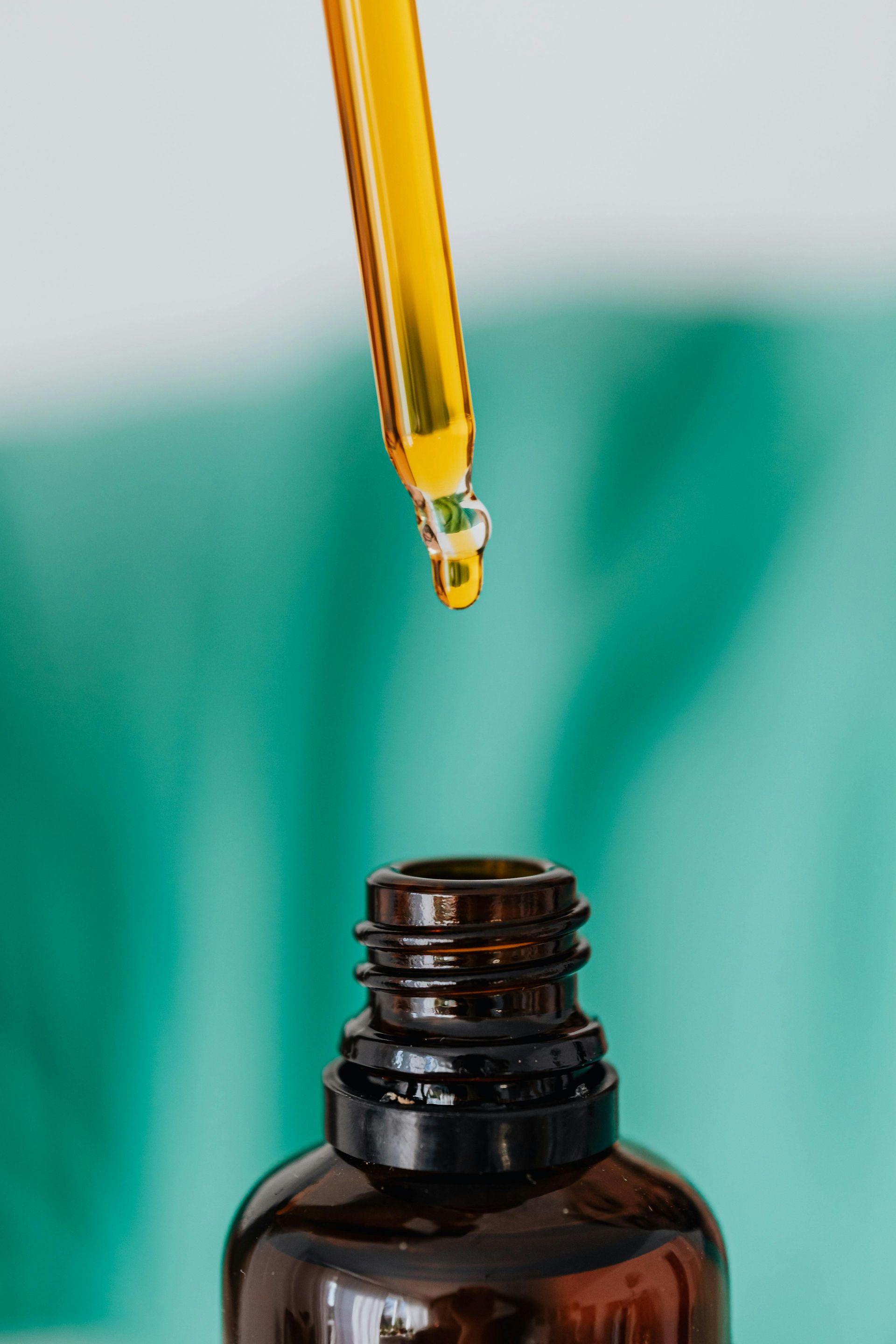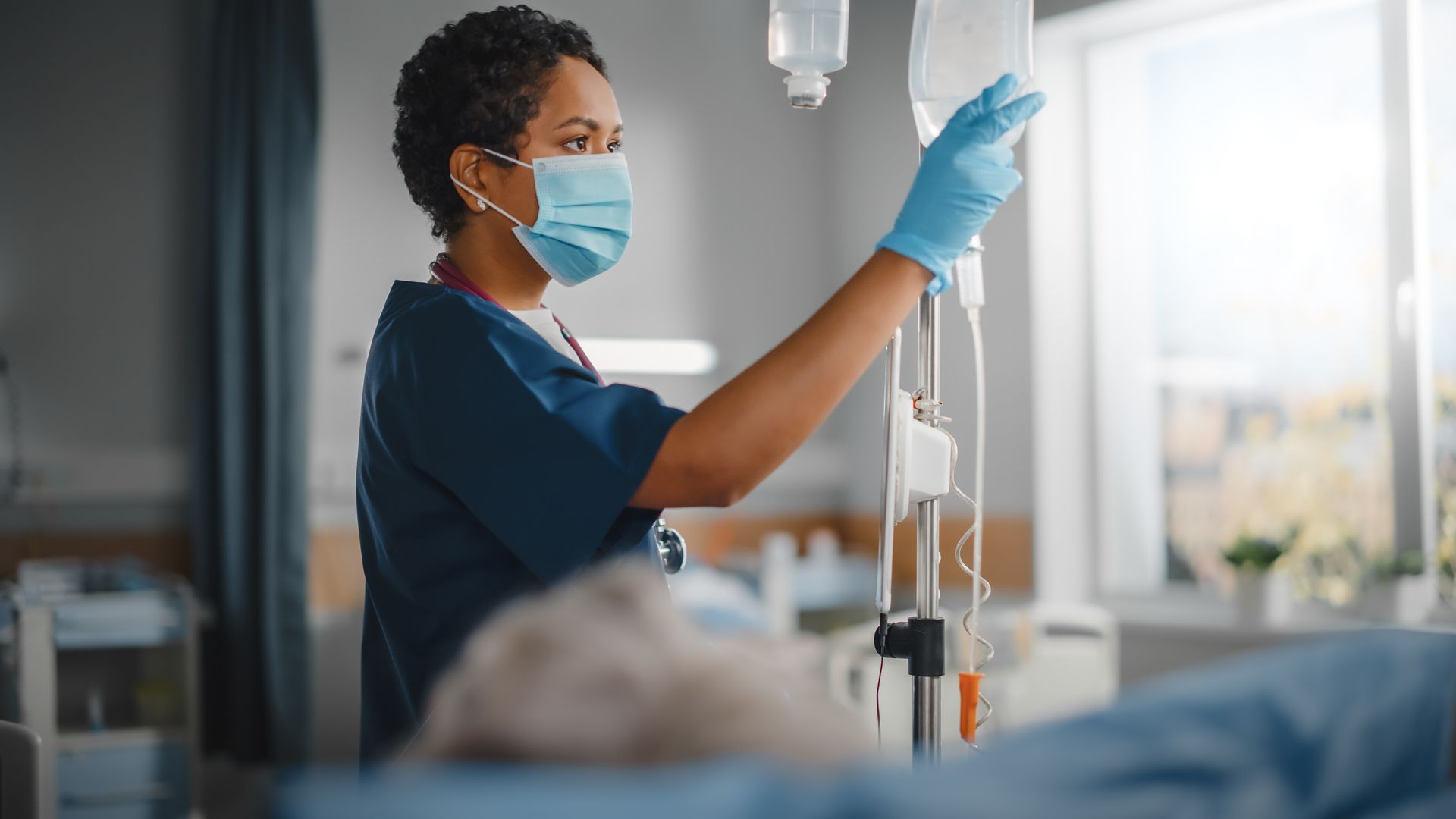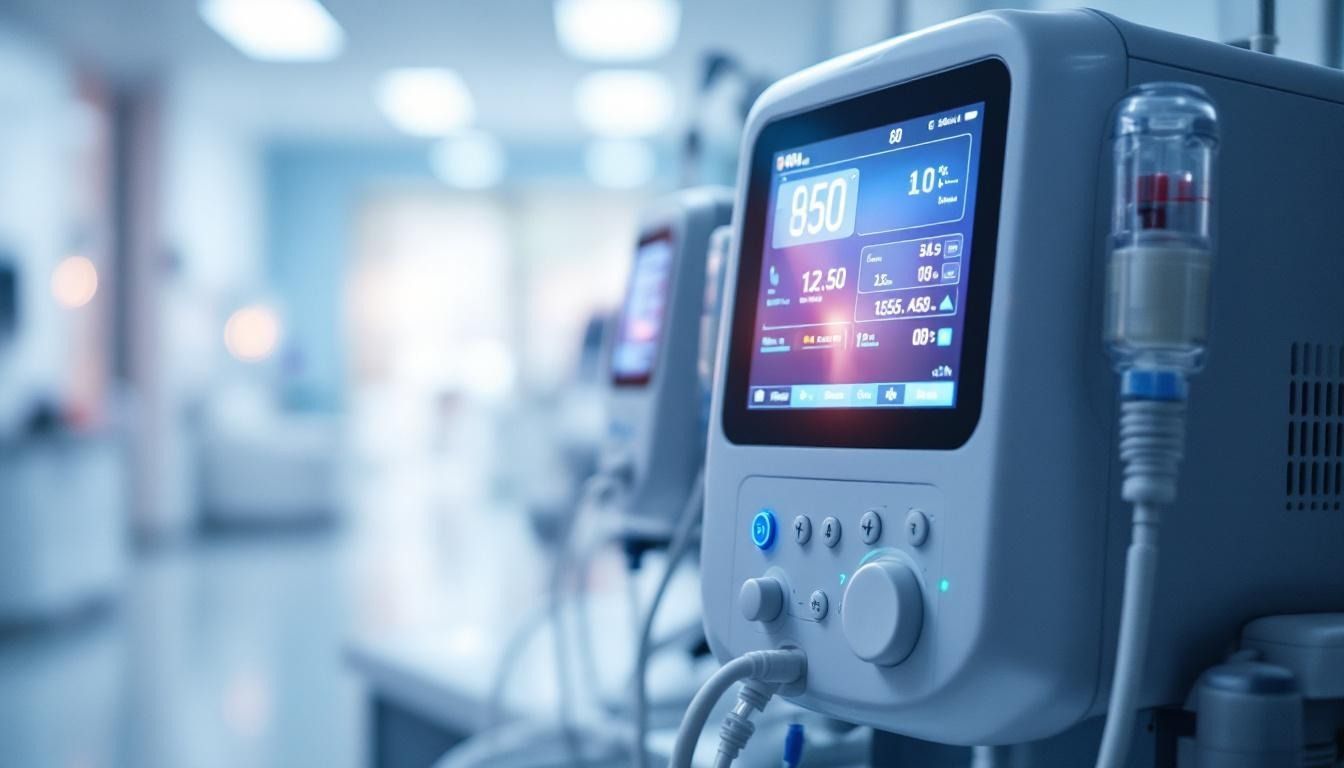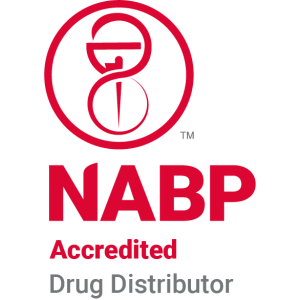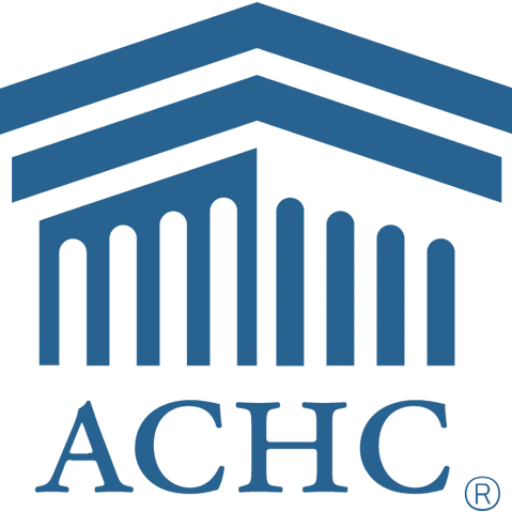Sterile infusion for safety and health
Understanding the Critical Role of Sterile Infusions
Intravenous (IV) therapy is a cornerstone of modern healthcare, providing vital fluids and medications directly into the bloodstream. As such, maintaining sterility during IV administration is crucial to safeguarding patient health. This article delves into various aspects of sterile infusions, including types, risks, and best practices, to provide a comprehensive guide for both healthcare professionals and informed readers.
Types of IV Fluids and Their Medical Application
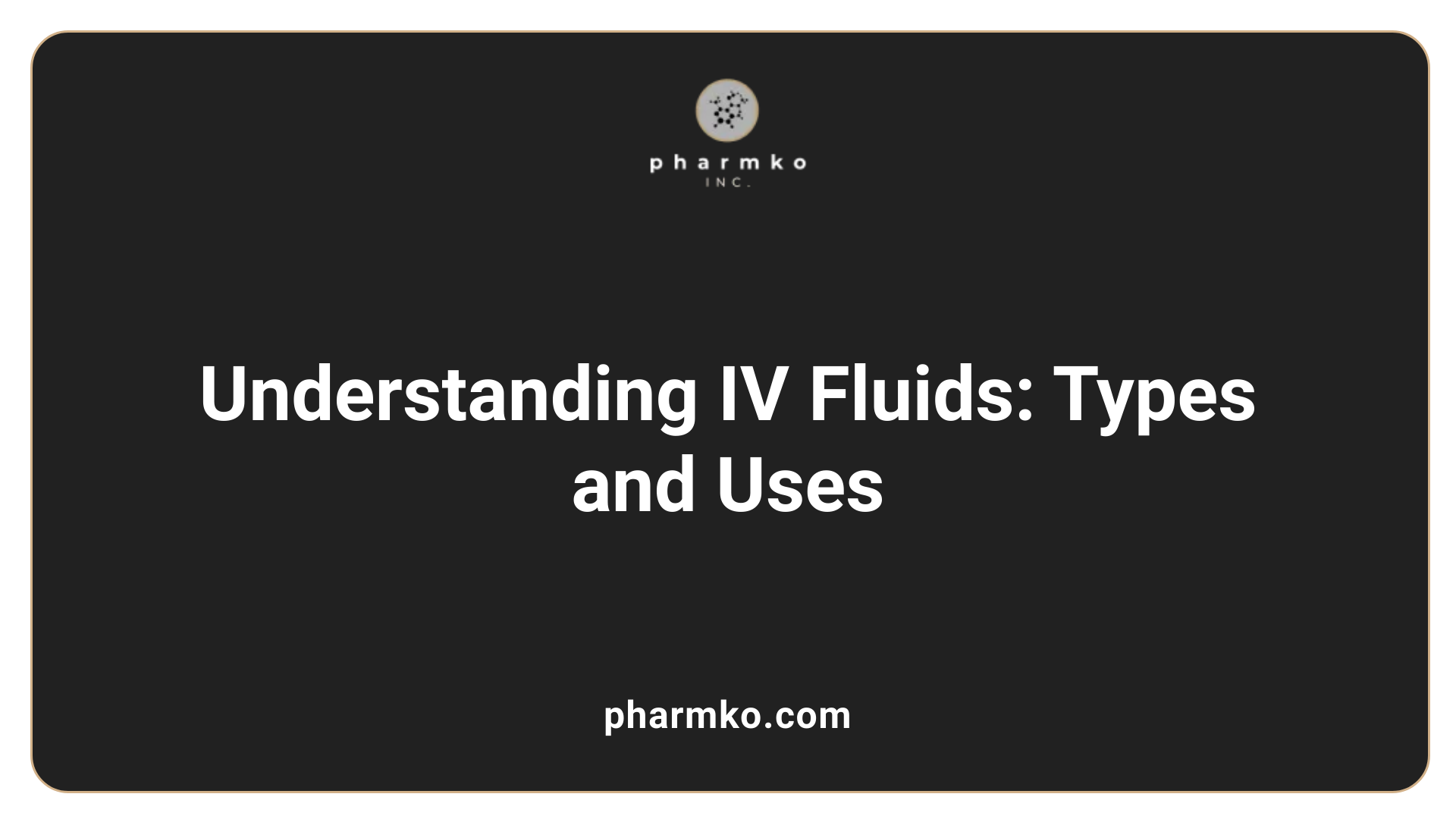
What are the types of IV fluids and their uses?
IV fluids are fundamental in medical care, classified mainly into crystalloids and colloids .
-
Crystalloid Solutions : These are the most frequently used IV fluids and are further divided into:
- Isotonic Solutions : Such as 0.9% Normal Saline and Lactated Ringer’s, which maintain the current osmotic balance in the body and are often given for dehydration.
- Hypotonic Solutions : Like 0.45% sodium chloride, are used to provide free water for hydration and help cells swell.
- Hypertonic Solutions : Such as 3% sodium chloride, serve to pull water from the cells into the bloodstream, often utilized in treating cerebral edema due to their osmotic properties.
-
Colloids : These solutions, which include products like albumin and hetastarch, contain larger molecules that help maintain oncotic pressure. They are particularly beneficial in cases of significant blood loss or when rapid volume expansion is required.
Monitoring and Safety
Effective use of IV fluids necessitates rigorous monitoring to ensure patient safety.
- Potential Complications : Administering IV fluids can lead to complications such as hypervolemia , where excessive fluid accumulates in the body, and cerebral edema , a dangerous swelling of the brain.
- Patient Assessment : Continuous monitoring of vital signs and fluid intake/output is crucial to mitigate risks associated with IV therapy.
In conclusion, IV fluids play a vital role in treating various medical conditions by addressing hydration needs and correcting electrolyte imbalances. By understanding the types of IV solutions and their applications, healthcare providers can ensure they offer optimal patient care.
Safe Injection Practices by the CDC
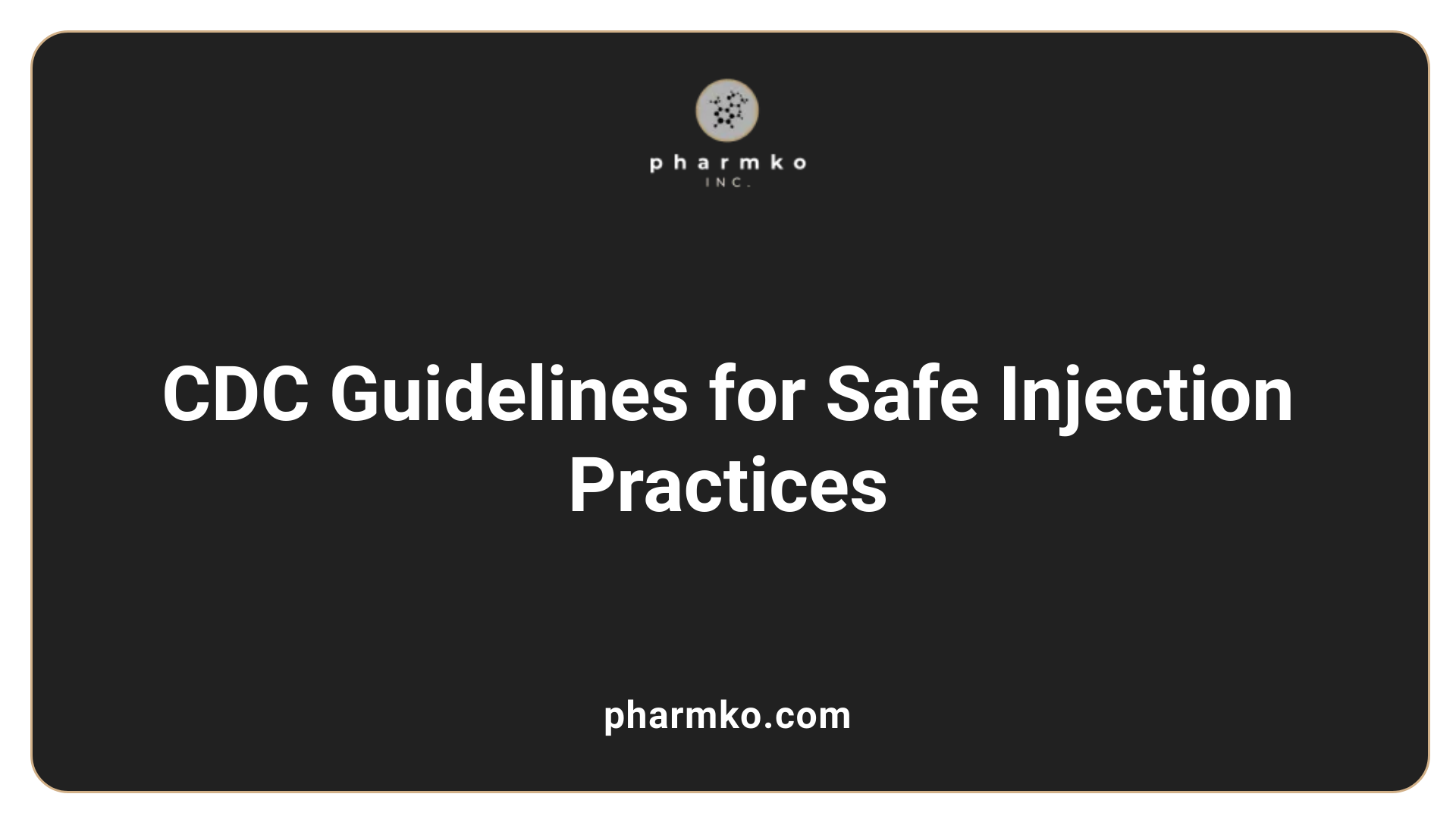
What are the CDC guidelines for safe injections?
The CDC guidelines for safe injections stress the importance of rigorous infection control practices and aseptic techniques during the preparation and administration of medications. Key recommendations include:
- Single-Use Components : Healthcare providers should never use a syringe to administer medications to more than one patient. This practice mitigates the risk of transmitting infectious agents.
- Avoiding Cross-Contamination : Care must be taken not to access medication vials with used syringes or needles. It's advisable to dedicate multi-dose vials (MDVs) to a single patient when possible. Once accessed, single-dose vials (SDVs) should be discarded immediately.
- Clean Medication Areas : Facilities are encouraged to maintain a designated clean area for drawing up injections. This helps in reducing the chances of contamination due to environmental factors.
- Training and Compliance : Healthcare personnel must receive training on safe injection practices upon hiring and at least annually thereafter to stay updated on best practices.
Preventing cross-contamination
Cross-contamination during injections can lead to severe infections and outbreaks, making it paramount to follow sound guidelines. Measures to prevent cross-contamination include:
- Using Sterile Equipment : Always use new, sterile single-use devices for each patient.
- Hand Hygiene : Practicing thorough hand hygiene before and after handling any injection materials significantly reduces infection risk.
- Proper Disposal : Safely discard needles and syringes in appropriate sharps containers right after use to eliminate re-use chances.
- Accessing Injection Ports Aseptic Technique : When accessing ports, it is crucial to use proper disinfection techniques, especially with needleless systems, to keep them pathogen-free.
By adhering to these CDC guidelines, healthcare providers can substantially enhance patient safety and mitigate the risk of infections during injection practices.
Administration and Safety of IV Therapy
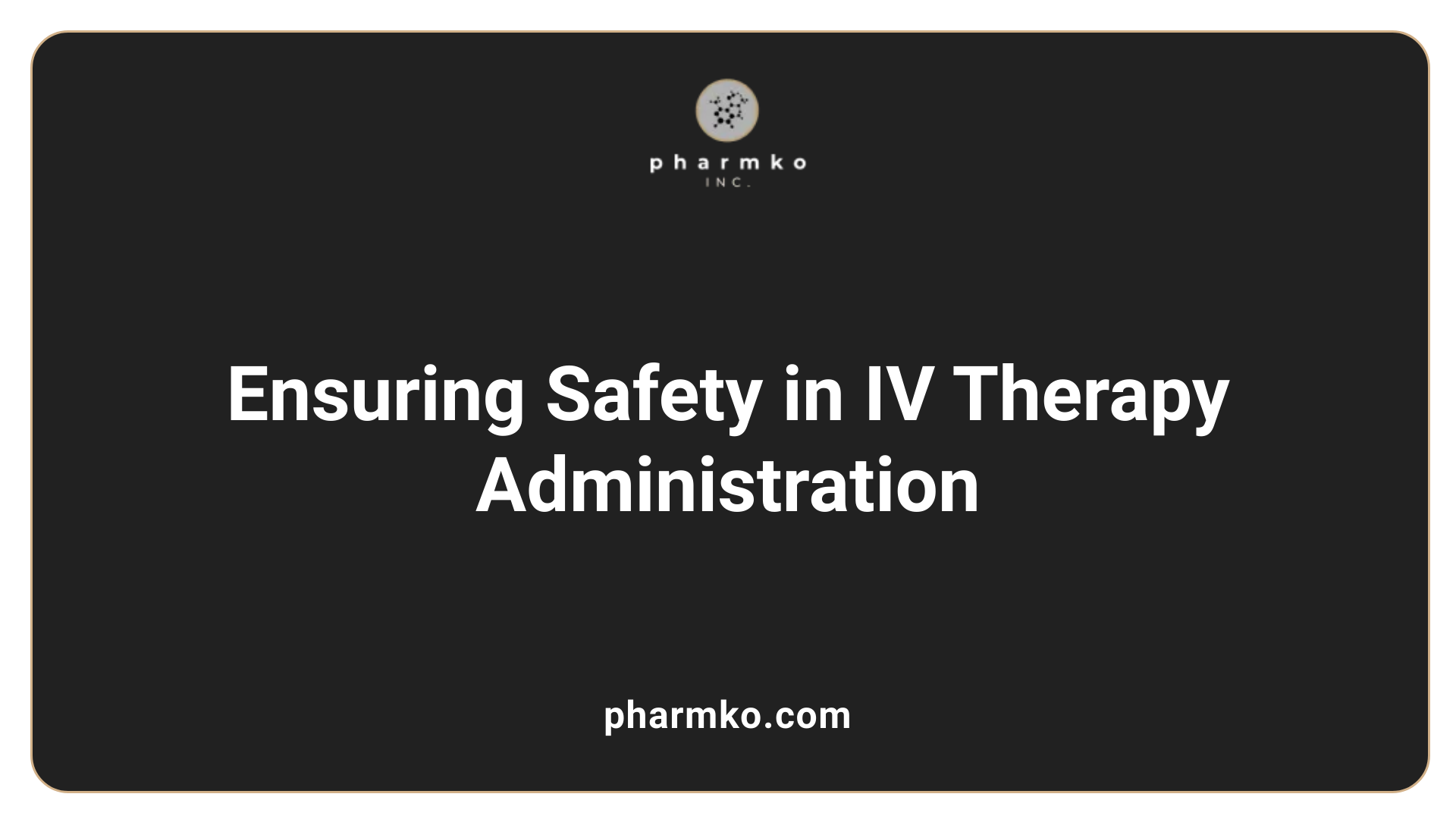
Safe Administration
The administration of intravenous (IV) therapy is fundamental to patient care, providing hydration, electrolytes, and medications swiftly and efficiently. To ensure patient safety, adhering to strict protocols is essential. These include the use of sterile, single-use disposable needles and syringes for every injection, thereby preventing contamination. Healthcare professionals must also use single-dose vials rather than multiple-dose vials whenever possible and discard any opened vials following use to mitigate cross-contamination risks.
Aseptic technique plays a vital role in IV administration, emphasizing the need to minimize microbial contamination. This involves maintaining a clean environment, performing thorough hand hygiene, and using sterile equipment throughout the procedure. Regular monitoring for complications, such as infiltration, phlebitis, and infections, is crucial to ensure the safety of patients receiving IV therapy. Furthermore, IV lines need to be replaced every 72 to 96 hours to minimize infection risks, and any suspected issues should be addressed swiftly.
Risks of Sterile Water
What happens if you give sterile water intravenously? Administering sterile water intravenously can lead to severe complications due to its hypotonic nature, which has an osmolarity of 0 mOsm/L. This hypotonic fluid can disrupt red blood cells, causing hemolysis, and may lead to serious conditions such as renal failure and cerebral or pulmonary edema. There are documented cases of patient deaths associated with the inadvertent administration of sterile water instead of appropriate IV solutions, highlighting the critical need for proper labeling and knowledge among healthcare providers.
The use of sterile water for injection is contraindicated without the addition of solutes to ensure tonicity, as direct infusion poses significant risks. Overall, healthcare practitioners must be aware of the dangers associated with sterile water to prevent adverse patient outcomes. To reduce the risk of misadministration, sterile water should only be available under strict pharmacy supervision, and education on the hazards should be a high priority for all healthcare personnel involved in IV therapy.
Aseptic Techniques and Infection Control
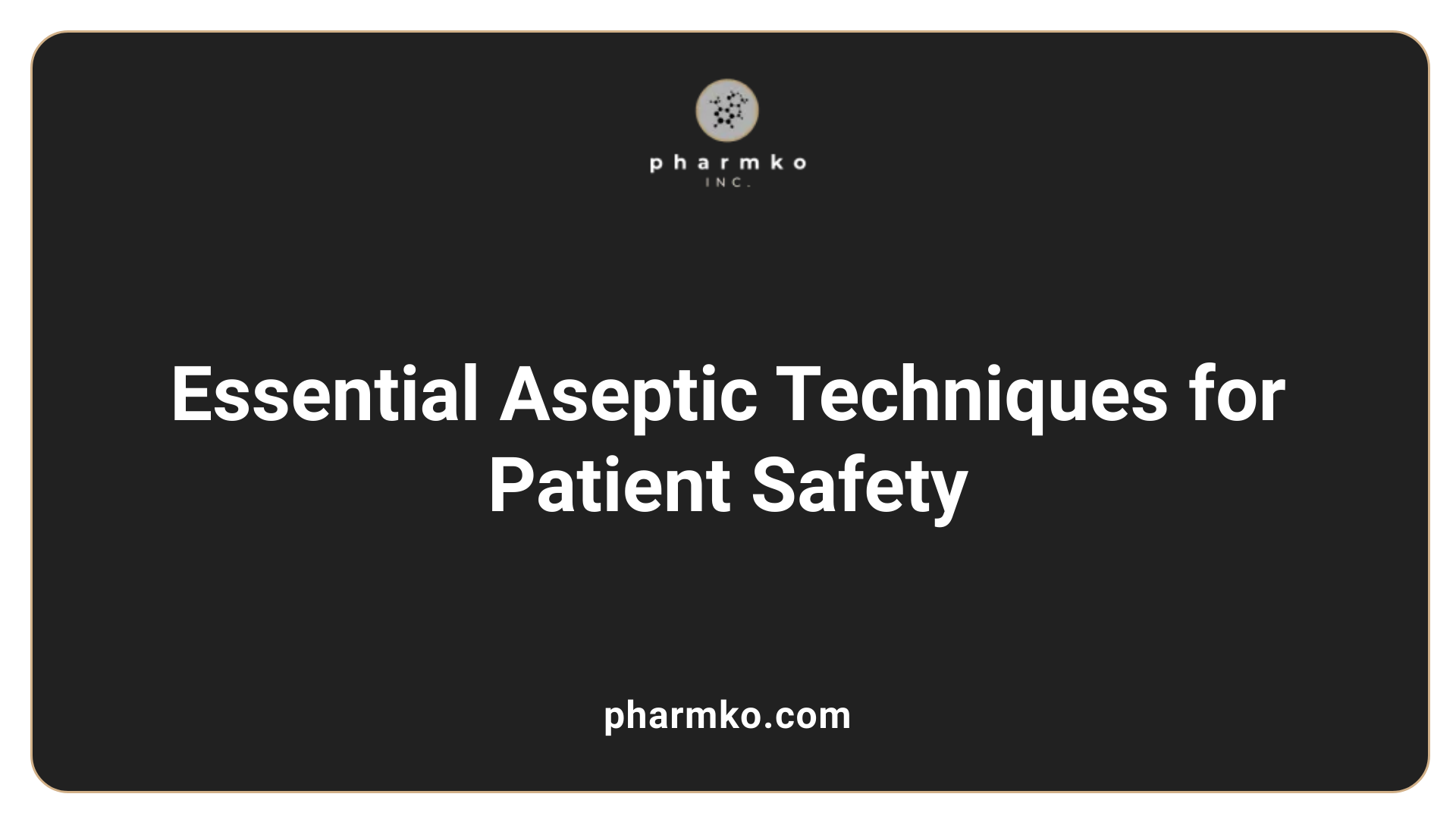
What are safe infusion practices?
Safe infusion practices are essential for preventing infections and ensuring patient safety. Key practices include:
- Single-use syringes : Never use the same syringe for multiple patients to prevent cross-contamination.
- Disinfection of rubber septums : Properly disinfecting medication vial septums before access minimizes germ introduction.
- Multi-dose vial policies : Adhere strictly to guidelines by using multi-dose vials for single patients whenever possible.
- Aseptic technique : Maintain this crucial practice throughout the administration process to eliminate contamination risks.
- Proper disposal of sharps : Safe disposal practices for needles and syringes help prevent needle-stick injuries and infection spread.
A recent study underscored the importance of education by revealing that healthcare workers show improved compliance in these areas after targeted training sessions. Such unsafe injection practices can lead to serious outbreaks of infections, demonstrating a critical need for ongoing education and stringent monitoring in healthcare settings.
Infection prevention in intravenous therapy
Infection prevention is paramount in intravenous (IV) therapy. The rapid infusion of medications and fluids directly into the bloodstream requires strict adherence to sterile procedures.
An essential aspect includes using pre-filled syringes when possible, and opting for single-dose vials instead of multiple-dose vials to mitigate risk. Furthermore, when connecting to IV lines, accessing ports using aseptic techniques is crucial to avoiding pathogen introduction.
Enhancing awareness around these methods not only protects patients but also fortifies the integrity of healthcare systems against contamination and nosocomial infections.
The Role of USP Chapter <797> in Sterile Compounding

Standards for Sterile Compounding
The United States Pharmacopeia (USP) General Chapter <797> provides essential standards for sterile compounding, ensuring that compounded sterile preparations (CSPs) meet critical criteria for sterility, purity, and strength. These standards are vital for the preparation of medications that are administered via injections, particularly for patients with compromised immune systems or specific healthcare needs.
Under these guidelines, compounding personnel must adhere to strict protocols that include:
- Aseptic techniques : Ensuring that the preparation environment is free from contaminants.
- Environmental monitoring : Regular checks to maintain cleanroom environments crucial for sterile processing.
- Trained personnel : Involving pharmacists and pharmacy technicians who are educated in safe compounding practices.
Regulatory Impacts
Regulatory bodies oversee compliance with USP Chapter <797>, enforcing guidelines that minimize the risks associated with sterile medications. This oversight is particularly important in infusion therapies, where the administration of CSPs can directly impact patient safety.
The standards mandate:
- Regular training : Ensuring that medical staff understand the importance of maintaining sterility throughout the compounding process.
- Quality assurance : Implementing routines that monitor both the preparation and storage of CSPs to prevent microbial contamination.
These practices significantly improve patient outcomes by reducing the incidence of infections linked to improperly compounded medications. By adhering to USP Chapter <797>, healthcare professionals can ensure that infusion therapies remain effective while safeguarding patient health from potential complications, thus promoting a safer healthcare environment overall.
Mitigating Risks with Safe Infusion Therapy
What is safe infusion therapy?
Safe infusion therapy is a method of delivering medications or fluids directly into the bloodstream through a flexible IV catheter, typically inserted into a vein in the arm or chest. This procedure is especially beneficial for patients who cannot take medications orally.
To ensure the safety of infusion therapy, maintaining sterility of all supplies is paramount. Healthcare professionals must conduct regular inspections for potential issues such as leaks, cracks, or discolored contents before using any materials. This vigilance helps prevent infections and complications that could arise from contaminated materials.
Key Safety Protocols
Here are several vital safety protocols to follow during infusion therapy:
- Sterile Supplies : Always use sterile IV equipment, including syringes and catheters, to minimize contamination risks.
- Proper Handling and Storage : Store medications and supplies per recommended guidelines, ensuring that sterile items are not compromised.
- Disposal Practices : Implement safe disposal practices, such as using a sharps container for needles, to prevent needle-stick injuries.
- Continuous Monitoring : Monitor the infusion site for any signs of infection or complication, which can help in taking immediate corrective measures.
- Home Infusion Therapy : This approach allows patients to receive treatment in the comfort of their homes under healthcare supervision. It not only enhances patient quality of life but also reduces the need for frequent hospital visits.
By adhering to these protocols, healthcare providers can greatly minimize risks associated with infusion therapy, ensuring patient safety and treatment efficacy.
Comprehensive Approach to Preventing IV Therapy Complications
Patient Safety
Patient safety is paramount in intravenous (IV) therapy, which entails careful administration of fluids and medications. Maintaining sterility during the preparation and delivery of IV therapies is crucial to prevent infections. This includes using sterile needles, syringes, and adhering to aseptic techniques throughout the entire process.
Also, ensuring the right type of IV fluid—whether isotonic, hypotonic, or hypertonic—is essential to avoid complications associated with fluid and electrolyte imbalances. Regular monitoring of the patient's condition is necessary to detect early signs of complications like infiltration, extravasation, and phlebitis.
Complication Monitoring
Healthcare professionals must be vigilant in monitoring patients during IV therapy. This includes assessing for potential adverse events, as localized infections or catheter-related bloodstream infections can lead to severe health issues.
Peripheral IVs should typically be replaced every 72 to 96 hours to minimize infection risks. Moreover, ongoing training and strict adherence to safe injection practices are vital. By prioritizing clear communication regarding protocol adherence, the risks associated with IV therapy can be significantly reduced, ensuring better patient outcomes.
Ethylene Oxide in Medical Device Sterilization
What are the Sterilization Processes Involving Ethylene Oxide?
Ethylene oxide (EtO) is a commonly used method for sterilizing medical devices, known for its effectiveness without damaging sensitive materials such as plastics and polymers. Approximately 50% of all sterile medical devices in the U.S. are sterilized using EtO, highlighting its importance within healthcare settings. This method is particularly crucial for devices intended for invasive procedures, ensuring they are free from harmful microorganisms.
What Safety Protocols and Regulations Govern Ethylene Oxide Sterilization?
The Food and Drug Administration (FDA) plays a significant role in ensuring the safety of medical devices undergoing EtO sterilization. This includes premarket reviews of device submissions to guarantee compliance with international standards for sterilization processes. The FDA has also established consensus standards that describe how to validate and control EtO sterilization, ensuring that residual levels of this chemical remain within safe limits.
Key elements of safety protocols include:
- Sterility Assurance : Ensuring devices are sterile upon market entry.
- Quality Control : Regular validation and monitoring of sterilization processes.
- Labeling Requirements : Clear labeling and safety data sheets (SDS) to inform healthcare providers about hazards.
Continued education on these practices is vital, as improper sterilization can lead to serious health risks and complications during medical procedures.
Addressing Supply Chain Challenges for IV Fluids
What challenges does the supply chain face concerning sterile IV fluids, especially during shortages?
The supply chain for sterile IV fluids is burdened with significant challenges, particularly highlighted during critical shortages caused by events such as Hurricane Helene. With around 85% of manufacturing capacity disrupted, healthcare facilities have been left to ration their supplies. In desperation, some hospitals have had to resort to alternatives like sports drinks, which can jeopardize the quality of patient care.
One of the primary issues stems from the concentration of production among a few key suppliers, including Baxter, ICU Medical, and B. Braun. This lack of diversification in the supply chain makes it extremely susceptible to disruptions. Furthermore, the historical context of the COVID-19 pandemic underscored similar vulnerabilities, reinforcing the necessity for enhanced preventive measures and more varied manufacturing approaches.
Actions taken to mitigate these shortages include increased collaboration among healthcare facilities and regulatory efforts aimed at expediting the approval process for foreign IV fluid products. These responses indicate a critical need for systemic changes in the supply chain management of intravenous solutions.
To summarize the complexities surrounding the production and accessibility of sterile IV fluids, consider the following table:
| Challenge | Impact | Mitigation Strategies |
|---|---|---|
| Disruptions due to natural disasters | 85% manufacturing capacity loss | Partnerships among healthcare institutions |
| Concentration of suppliers | Increased vulnerability to shortages | Regulatory actions for faster foreign product approvals |
| Historical disruptions (e.g., COVID-19) | Heightened awareness of supply chain weaknesses | Diversified manufacturing strategies |
The evolving landscape demands a proactive approach in both supply chain management and healthcare preparedness to ensure the safety and availability of critical IV fluids.
Home Infusion Therapy: Convenience and Safety
Home infusion options
Home infusion therapy is an efficient way to deliver medications directly into the bloodstream using an IV or subcutaneously. This method can be particularly favorable for patients who require therapies that are more effective than oral medications. For instance, Total Parenteral Nutrition (TPN), anti-infective therapies, and cancer supportive therapies can all be administered at home, providing greater comfort and flexibility for patients.
Benefits and risks
One of the primary benefits of home infusion therapy is convenience. Patients can continue their daily lives without frequent trips to healthcare facilities, which can be both time-consuming and costly. Furthermore, for immunocompromised individuals, receiving therapy at home reduces the risk of exposure to infections common in clinical environments.
However, the success of home infusion therapy depends significantly on safety practices. Patients and caregivers are advised to maintain strict hygiene by washing their hands before treatment. It’s also essential to use sterile supplies; compromised items should be discarded immediately to prevent infections.
While the benefits are substantial, risks still exist. Trained healthcare professionals must educate patients and caregivers on proper procedures and monitoring for any adverse effects during the infusion. Overall, when managed properly, home infusion therapy offers a balancing act of convenience and safety for patients in need of ongoing medical treatment.
Hazardous Drug Handling During Infusion Procedures
What safety measures are crucial for handling hazardous drugs during infusion procedures?
Handling hazardous drugs during infusion procedures involves several critical safety measures to ensure both patient and healthcare provider safety. First and foremost, the use of Personal Protective Equipment (PPE) is essential. This includes gloves, gowns, and masks, which should be specifically tested to withstand exposure to chemotherapy agents. An effective PPE policy can significantly reduce the risk of contamination and personal exposure.
Compounding of hazardous medications should be conducted in a Controlled Environment. This includes the use of Biological Safety Cabinets (BSCs) or Compounding Aseptic Containment Isolators (CACIs). These specialized areas are designed to minimize environmental exposure and prevent the release of hazardous substances into the general area, significantly enhancing safety during the preparation of these drugs.
Additionally, comprehensive safety programs must be implemented, which should include regular training and education for all healthcare personnel on safe handling techniques and emergency procedures. Adherence to robust standards such as USP General Chapter <800> is also critically important, as it provides guidelines for the safe handling of hazardous drugs in healthcare settings.
Proper disposal of hazardous waste is another key component of safety protocols. All regulations concerning the disposal of contaminated materials must be strictly followed to protect all healthcare workers and prevent environmental contamination. Utilizing closed-system drug-transfer devices can further enhance safety by preventing the escape of hazardous drugs into the environment.
How can risk be prevented during infusion procedures involving hazardous drugs?
To prevent risks while handling hazardous drugs, effective ventilation systems must be in place within compounding areas. These systems help to ensure proper airflow and minimize the potential for contaminant accumulation. Regular monitoring of compounding environments is necessary to ensure ongoing compliance with safety standards.
Furthermore, healthcare facilities should encourage a culture of safety that empowers employees to report unsafe conditions or concerns without fear of repercussion. This proactive approach allows for immediate corrective actions to mitigate potential hazards.
By implementing these safety measures and utilizing effective risk prevention strategies, healthcare professionals can significantly decrease the likelihood of exposure to hazardous drugs during infusion procedures, ensuring a safer environment for both patients and staff.
Importance of Training in Sterile Compounding
Training Programs
Training programs for sterile compounding are essential in ensuring healthcare professionals maintain high standards of safety and quality. These programs focus on teaching aseptic techniques crucial for preparing compounded sterile preparations (CSPs) to minimize contamination risks.
Healthcare practitioners must receive comprehensive training that includes the proper use of sterile environments and equipment, including personal protective gear. Regular updates and refresher courses are necessary to keep personnel informed about current regulations such as those outlined in USP General Chapter <797>.
Quality Assurance
Quality assurance within sterile compounding practices plays a vital role in safeguarding patient health. Maintaining strict protocols for the preparation and storage of CSPs ensures their integrity and sterility. Environmental monitoring and routine documentation help in detecting possible contamination early.
Furthermore, adherence to regulations mandated by organizations like the FDA and CMS reinforces a culture of accountability and safety. This is particularly important given that unsafe practices can lead to serious health risks for patients, demonstrating the crucial link between training and quality control in sterile compounding.
Protocols and Guidelines for IV Infusions
What protocols and guidelines exist for managing and administering sterile IV infusions?
Protocols and guidelines for managing and administering sterile IV infusions are paramount for ensuring patient safety in healthcare settings. Since intravenous therapy is prevalent in hospitals, adherence to these protocols mitigates risks associated with IV treatments.
-
Aseptic Techniques : Implementing aseptic techniques is crucial to prevent microbial contamination during IV preparations and infusions. This includes maintaining clean environments and using sterile equipment.
-
Monitoring IV Sites : Regular assessment of IV sites helps identify complications such as phlebitis, infiltration, or extravasation. Prompt detection enables timely intervention, which is key to patient safety.
-
Documentation : Thorough documentation of infusion details, including start and end times as well as the volume administered, is vital. This fosters transparency and helps facilitate communication among healthcare teams.
-
Infusion Management Procedures : Verifying physician orders and calculating appropriate infusion rates are essential components of IV management. Following the standards set by the USP General Chapter <797> ensures that compounded sterile preparations (CSPs) are free from contamination.
-
Resource Conservation : Guidelines encourage healthcare professionals to transition to alternative administration routes when clinically feasible, which helps conserve IV fluid resources amidst shortages.
Adhering to these comprehensive practices supports compliance with infection prevention policies and enhances overall patient care.
Conclusion: Upholding the Integrity of Sterile Infusions
Ensuring sterility during infusion practices is paramount to patient safety and effective healthcare delivery. Adhering to established guidelines, maintaining robust training programs, and implementing advanced technologies can profoundly enhance the quality and safety of infusion therapies. As the medical community continues to adapt and respond to challenges such as supply shortages and hazardous drug management, a steadfast commitment to sterile practices will remain essential for protecting patient health and advancing treatment outcomes.
References
- IV Fluids (Intravenous Fluids): Types & Uses - Cleveland Clinic
- Preventing Unsafe Injection Practices | Injection Safety - CDC
- Sterile Water Should Not be Given Freely | Advisory
- Importance of sterile compounds in infusion - Pharmko
- How does sterile compounding improve infusion therapy? - Pharmko
- Chapter 23 IV Therapy Management - Nursing Skills - NCBI Bookshelf
- Safe Injection Practices to Prevent Transmission of Infections ... - CDC
- [PDF] ASHP Guidelines on Compounding Sterile Preparations
- [PDF] apic position paper: safe injection, infusion, and medication vial



